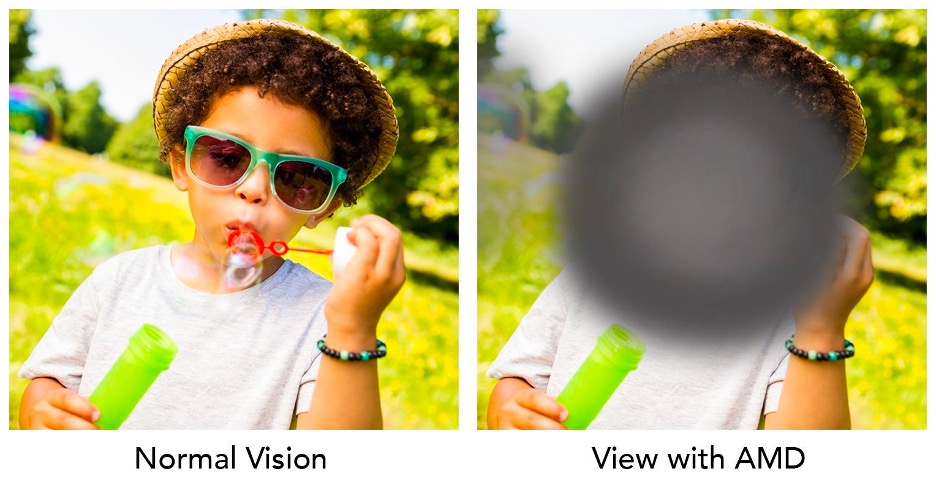A $12.4 million award from the California Institute for Regenerative Medicine is the latest round of support for USC researcher Mark Humayun. It also represents a milestone for USC researchers whose stem cell patch is under development to treat advanced dry age-related macular degeneration, which can cause blindness.
By Tran Courtney and Helen Immerso
A stem cell patch developed by USC researchers for patients with macular degeneration will soon be tested in a phase 2b clinical trial.
This latest milestone in the patch’s development was made possible by a combined $21 million in support from a state organization, a nonprofit foundation and the university. Last month, the California Institute for Regenerative Medicine (CIRM) awarded an estimated $12.4 million to the USC-supported startup Regenerative Patch Technologies (RPT) to test the safety and efficacy of the patch for treating advanced dry age-related macular degeneration, also known as “geographic atrophy.”
The award from CIRM, a state institute that supports research to address unmet medical needs, is the latest round of funding for the startup. USC and The Marcus Foundation were also influential in the award.
Key supporters
To qualify for CIRM funds, applicants must have a substantial amount of co-funding. USC Research and Innovation provided a $2 million promissory note to partially fulfill the co-funding requirement. The Marcus Foundation in Atlanta also played a critical role, providing USC researcher Mark Humayun and the university with more than $7 million in a peer-reviewed grant for this novel, transformational stem cell research program at USC that is aimed at curing blindness.
“I want to thank USC President Carol L. Folt for supporting this important research, as well as USC Research and Innovation for all the work they did to make this possible,” said Humayun, director of the USC Ginsburg Institute for Biomedical Therapeutics and co-director of the USC Gayle and Edward Roski Eye Institute. “I would also like to thank The Marcus Foundation for their generous support after a thorough review process.”
USC Research and Innovation’s award came from a first-of-its-kind, dedicated research program that supports USC faculty partnerships with small businesses to plan competitive funding applications.
“We are thrilled to support this critically important medical innovation by fostering the university’s ongoing technology transfer and commercialization efforts through faculty partnerships with small businesses,” said Ishwar K. Puri, senior vice president for USC Research and Innovation.
A patch with promise
Geographic atrophy affects more than 1 million Americans ages 40 and older, according to data from the Centers for Disease Control and Prevention. Currently, there is no therapy to improve vision in patients who have the condition.
Research on the patch so far has indicated positive results. It appears to restore the structure and function of the retina to improve vision. The phase 2b clinical trial will involve evaluating the efficacy of the implant in 24 patients who have suffered vision loss from geographic atrophy.
The disease affects a vital group of cells: retinal pigment epithelium (RPE) cells. When healthy, these cells enable photoreceptor cells of the retina to detect light. With geographic atrophy, RPE cells degenerate over time. This can lead to photoreceptor loss, impaired vision and, for many, blindness, forcing some patients to lose their independence.
“CIRM is proud to continue to fund this groundbreaking stem cell therapy that has the potential to improve outcomes for the millions of people suffering from geographic atrophy,” Maria T. Millan, president and chief executive officer of CIRM, said in an announcement of the award. “This investment is follow-on funding to CIRM’s previous support to develop this therapy. It reflects our commitment to advancing cutting-edge science and underscores our dedication to addressing the unmet medical needs of those affected by degenerative diseases.”
The researchers realizing the vision
Humayun and his fellow co-founders of Regenerative Patch Technologies — Dennis Clegg, professor in the department of molecular, cellular and developmental biology at the University of California, Santa Barbara; and the late David Hinton, professor of ophthalmology and pathology at USC — had developed the core technology for the stem cell-based subretinal implant.
The implant, named the “California Project to Cure Blindness-Retinal Pigment Epithelium 1” or CPCB-RPE1, is licensed by the USC Stevens Center for Innovation exclusively to Regenerative Patch Technologies.
The phase 2b clinical trial at USC will be led by Sun Young Lee and Rodrigo Antonio Brant Fernandes, both MDs and faculty members at the USC Roski Eye Institute.
Previously, the Alfred E. Mann Institute at USC had provided support for the initial development of the implantable patch as an incubator for new USC-related companies.
About the California Institute for Regenerative Medicine (CIRM
CIRM, was created by the people of California to accelerate stem cell treatments to patients with unmet medical needs, and act with a sense of urgency to succeed in that mission.
To meet this challenge, CIRM’s team of highly trained and experienced professionals actively partners with both academia and industry in a hands-on, entrepreneurial environment to fast-track the development of today’s most promising stem cell technologies.
